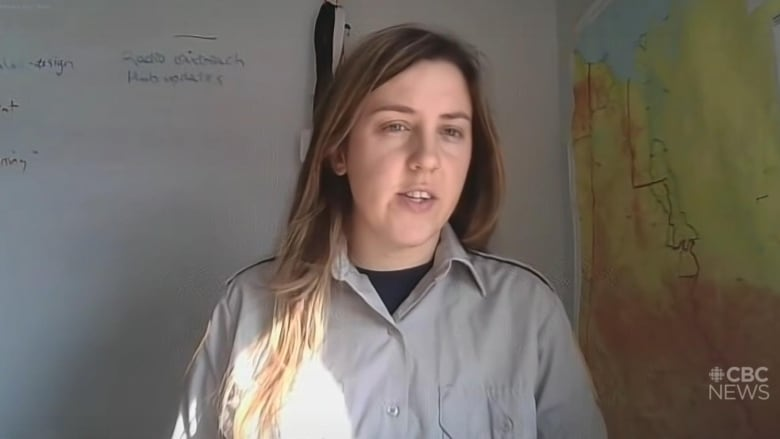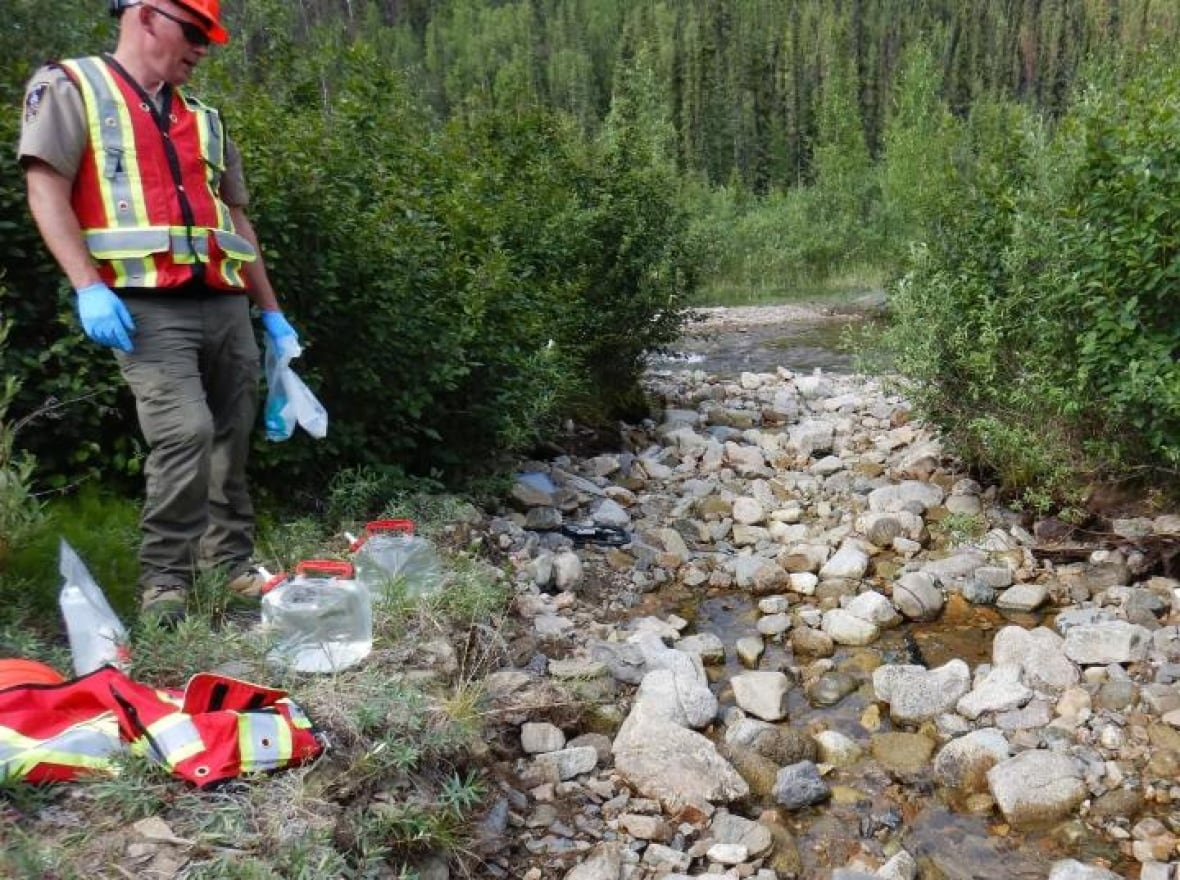Canada News
Amid wildfires, Yukon government takes first step to mitigate disaster at Eagle mine

Fire information officer Haley Ritchie provided a live update on the Haldane Lakes fire impeding mitigation efforts at the Eagle mine site. (Yukon Government)
· RCI, CBC News
Gov’t has hired contractors to address the issues at the Eagle mine
The Yukon government has hired contractors to address the ongoing issues at the Eagle mine site, but says Victoria Gold remains responsible for the site.
At a July 26 technical briefing, deputy minister of Energy, Mines and Resources Lauren Haney announced that the territorial government will oversee construction of a berm in the area where the mine’s heap leach pad failed.
The government has stopped short of assuming full responsibility for mitigation efforts at the mine site. Contractors hired by the government are meant to “complement [and] supplement” other work happening onsite by Victoria Gold, said Haney.
The aim is to create a safe working zone to allow construction of interception wells — which may help prevent contaminated solution from reaching surface water — and enable groundwater monitoring.
That work was meant to start today, but Haney said wildfires burning near the access road to the mine site have stalled those efforts.
“They are in a holding pattern, waiting until it’s safe to mobilize,” she said. “Once onsite, we expect this work to take about two weeks to complete.”
Report outlined concerns
The update follows the company’s failure to meet a July 25 deadline of inspector’s directions issued on July 20.
The company has partially fulfilled government work requests to prevent toxic ore solution from reaching Dublin Gulch and Haggart’s Creek, but a government inspection report highlighted concerns with that work, such as neglecting to add a lining to a pit intended to store contaminated solution.
Access to the site is currently impeded by the Haldane Lakes fire, a new 4,155-hectare blaze reported in the early hours of July 26.
“The size of the fire is too big right now for full suppression,” said Haley Ritchie, a fire information officer with the territorial government. “It started during a period of erratic winds from a thunderstorm, so it grew very big, very quickly.”
Ritchie said erratic winds can cause trees to fall into the road at any time, as well as potential for fire activity directly adjacent to the road and poor visibility due to smoke.
Environment Canada issued a severe heat warning for the Mayo region Friday, with temperatures expected to reach a high of 28.
Water monitoring finds increasing cyanide
Daily water sampling has been occurring at eight different surface water sites downstream of the mine and three groundwater sites. Those samples are screened for cyanide, heavy metals and other contaminants.
“Over the past week, we are starting to see a potential change in the level of contaminants found in the water,” said Tyler Williams, a water resources scientist with the Yukon government. “We are observing an increase of cyanide in the water.”
Williams said these increases are consistent with groundwater contamination beginning to enter the surface watershed, which will require monitoring at the site for years to come.

Core Geoscience Services Inc., a Yukon-based environmental consulting firm, took over water sampling on July 20.
Government biologists have also collected 50 Arctic grayling fish and over 40 slimy sculpin from Haggart Creek and its tributaries. Those fish are currently being tested for arsenic, cadmium, lead and mercury.
No dead fish were observed during the collection process, officials said, and they have no concerns related to drinking water or hunting in the area.
Calls for an independent investigation
While Yukon government representatives mentioned ongoing collaboration with the First Nation of Na-Cho Nyäk Dun, no members from the First Nation were present at the briefing.
“We have solely the regulator and enforcement agency, as well as our environmental protection agency of the public government,” said Haney. “For now, we’re keeping this as a message of the public government. In the future, we could contemplate a co-briefing.”
On July 19, First Nation of Na-Cho Nyäk Dun Chief Dawna Hope told CHON-FM that members weren’t invited to speak and weren’t informed of previous briefings until the last minute.
Hope also said it is the technical teams between the two governments who are in communication, rather than leadership.
In a July 24 press release, Carcross/Tagish First Nation expressed support for Na-Cho Nyäk Dun’s and White River First Nation’s requests for an independent investigation of the Victoria Gold Eagle mine failure.
“Victoria Gold clearly did not utilize and adopt effective measures to prevent this disaster, and consequently Yukoners are again left with the economic and social costs of cleaning up this mining catastrophe,” said Maria Benoit, Carcross/Tagish First Nation’s Ḵaa Shaadé Hení (chief).
Benoit said the First Nation would no longer support any future mines within the headwaters of the Yukon River in their traditional territory.





















